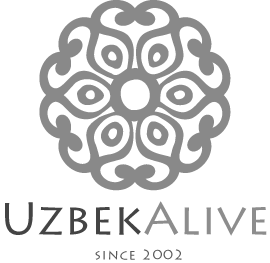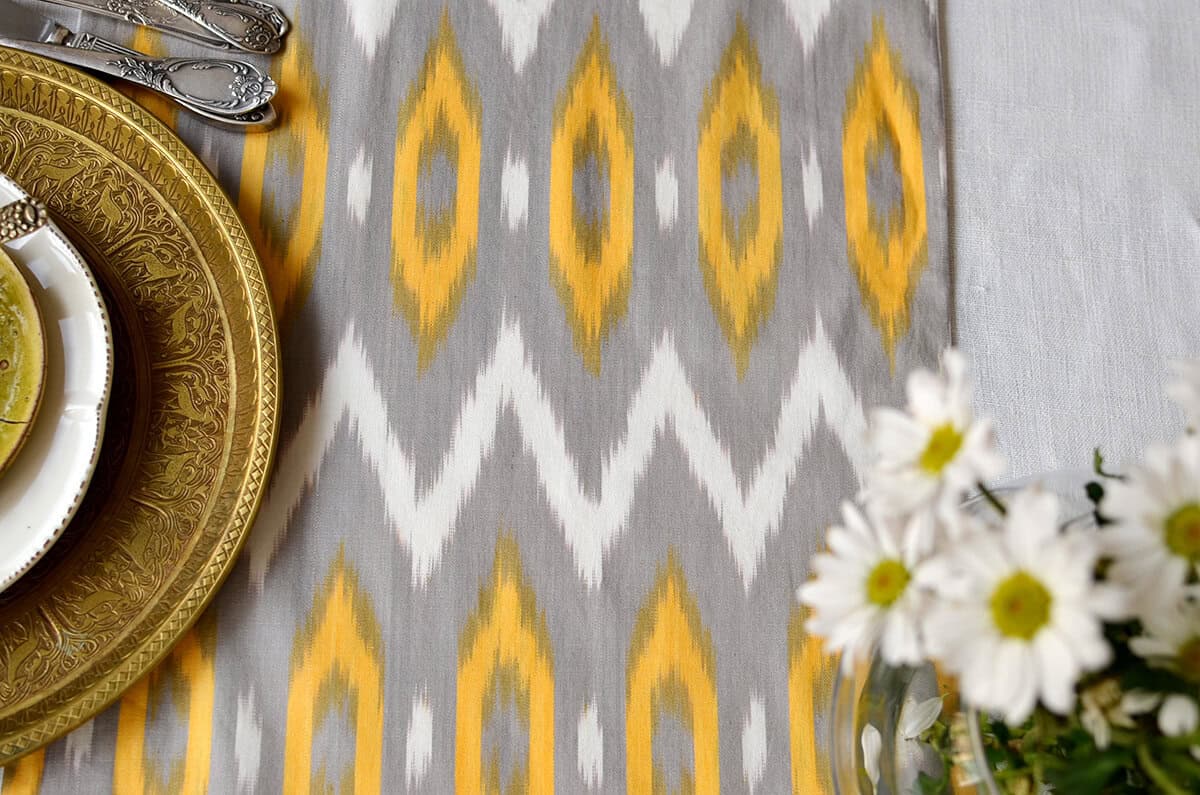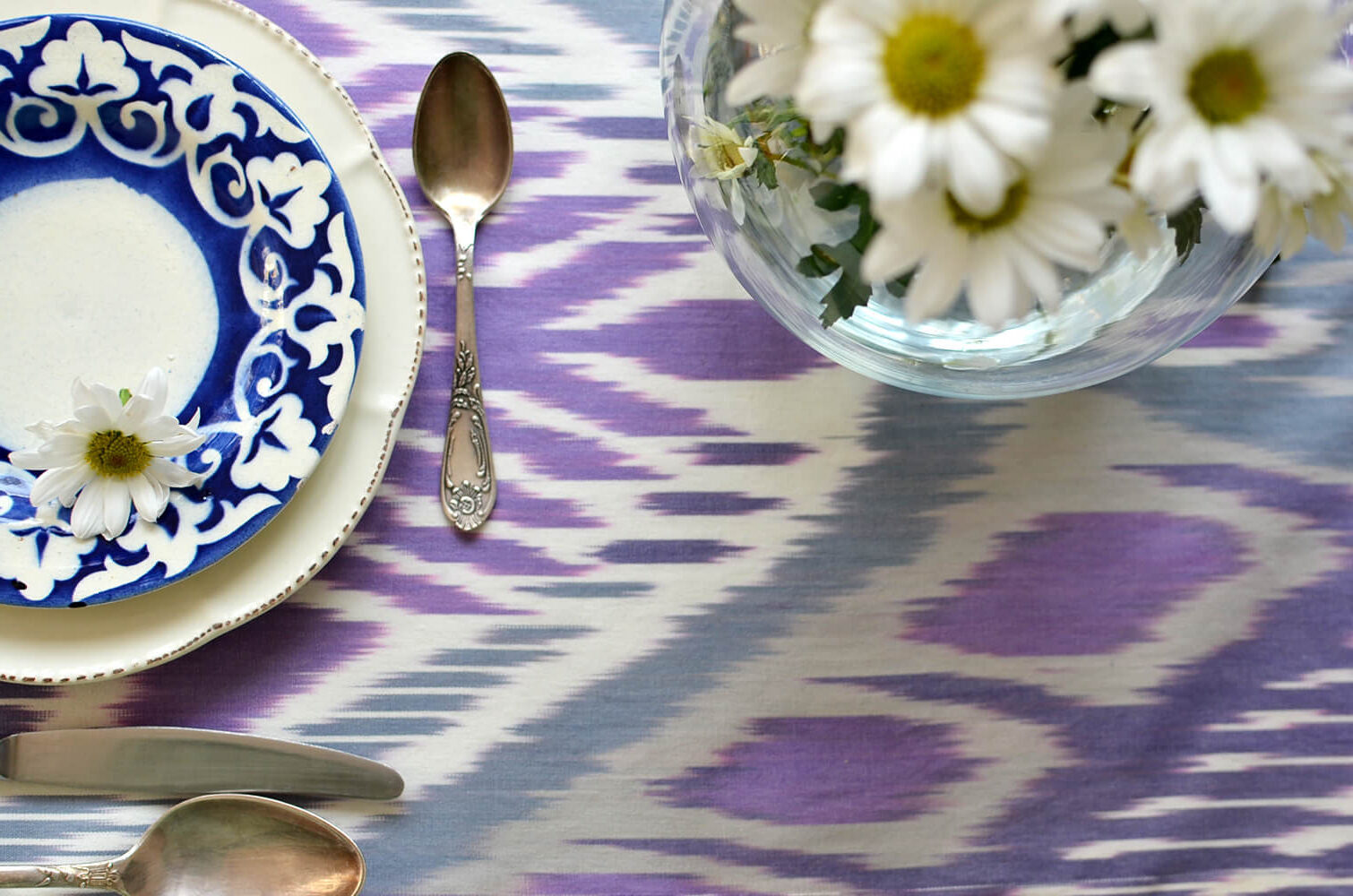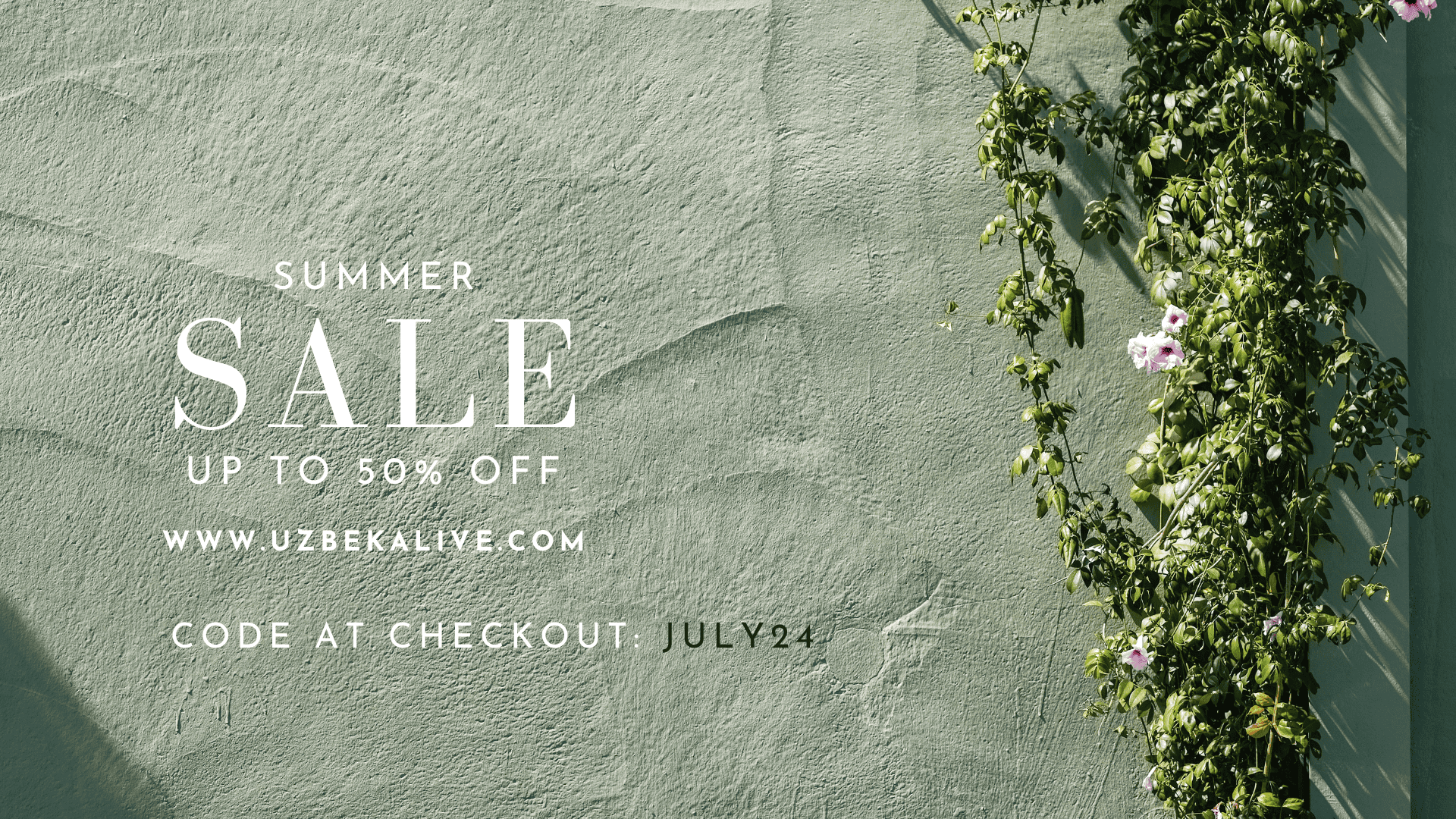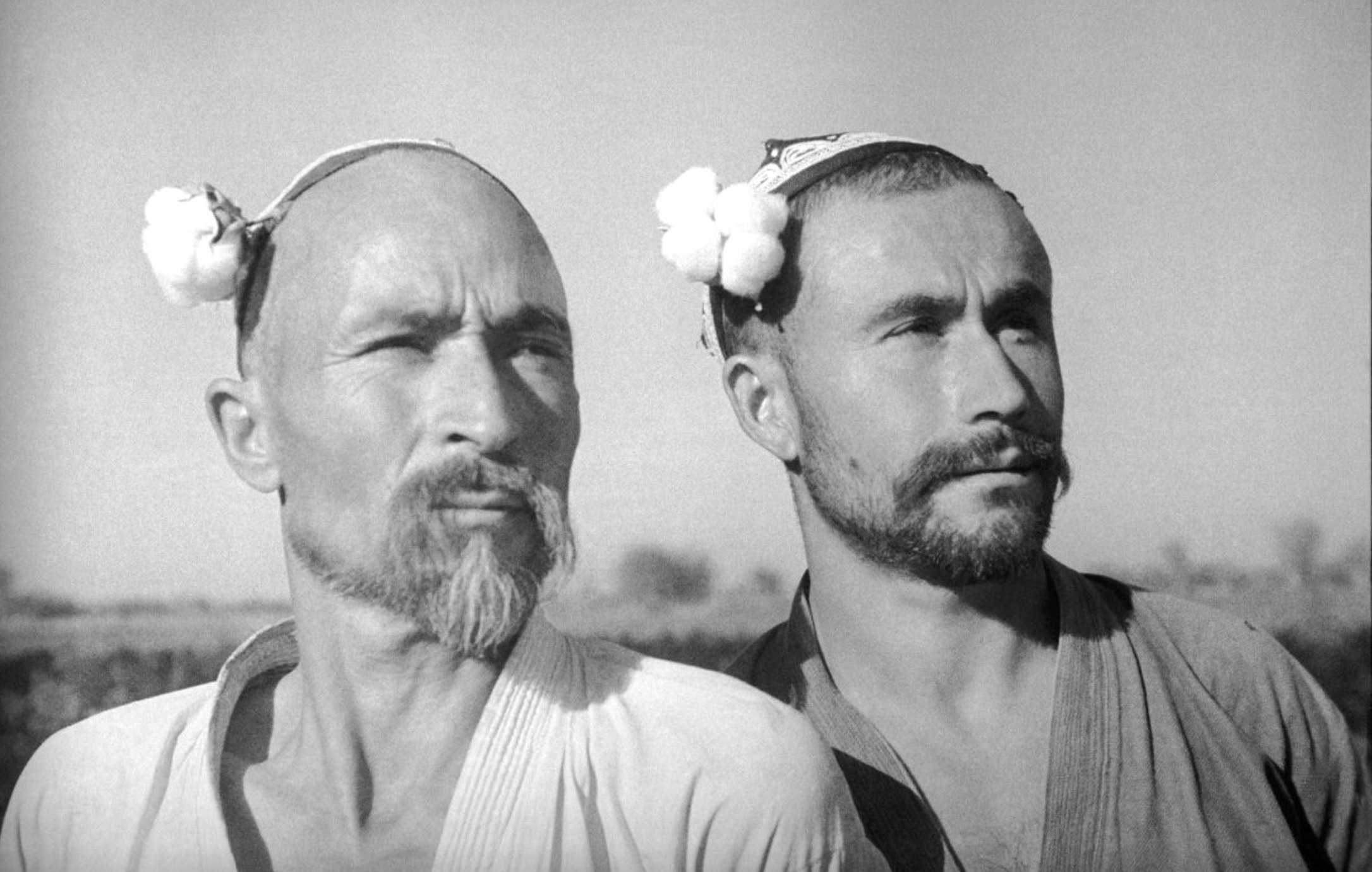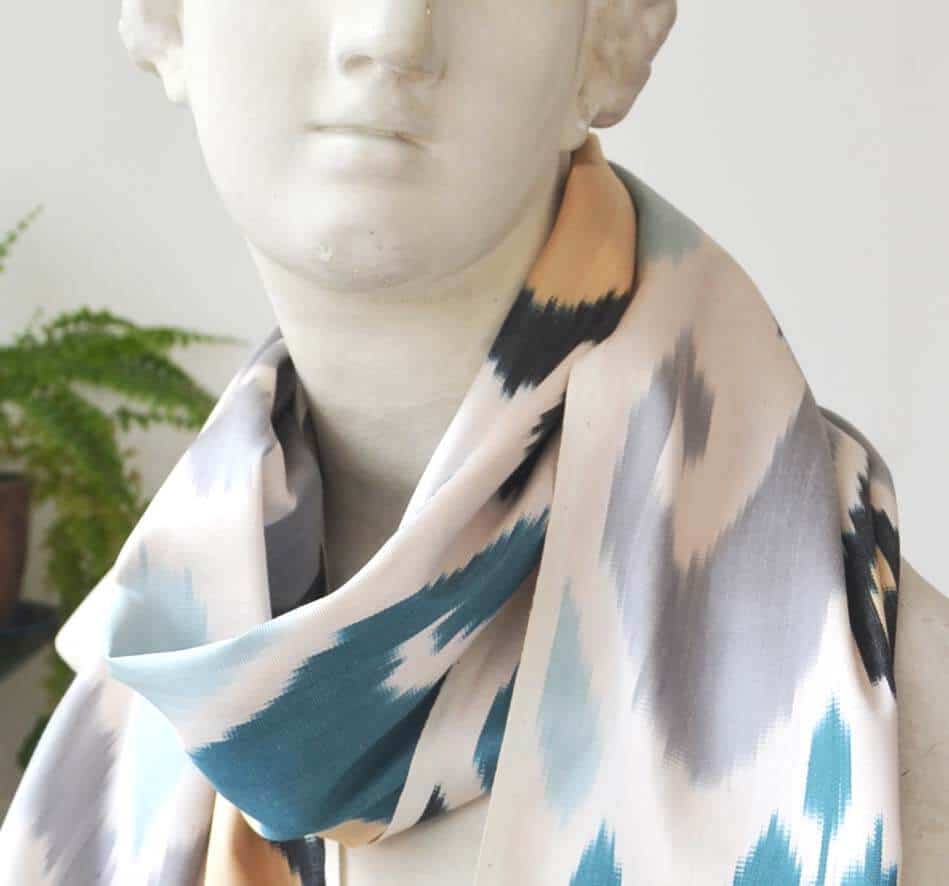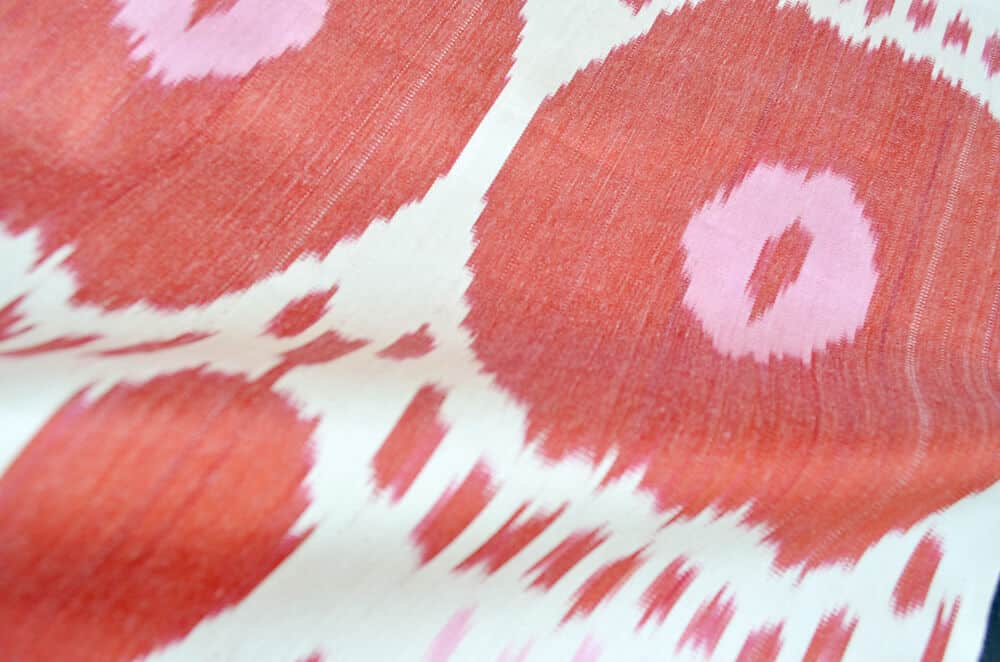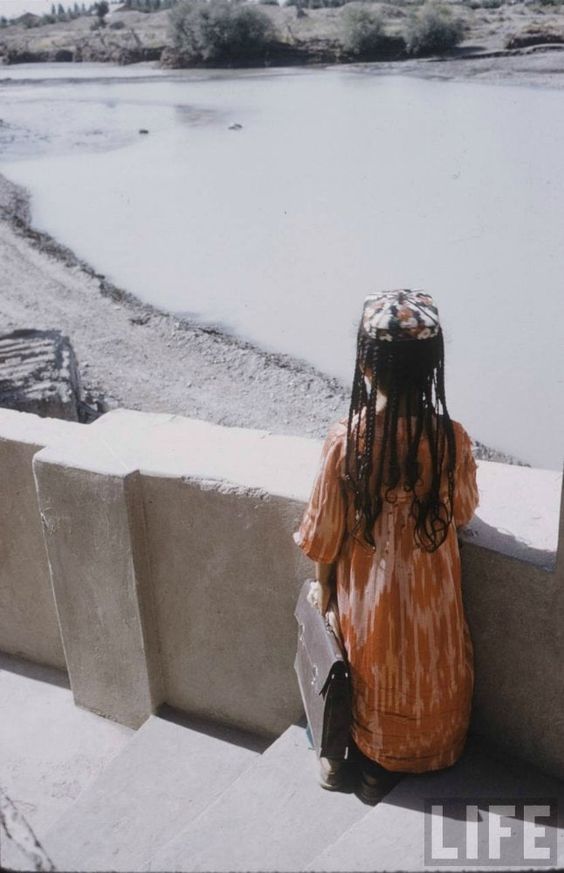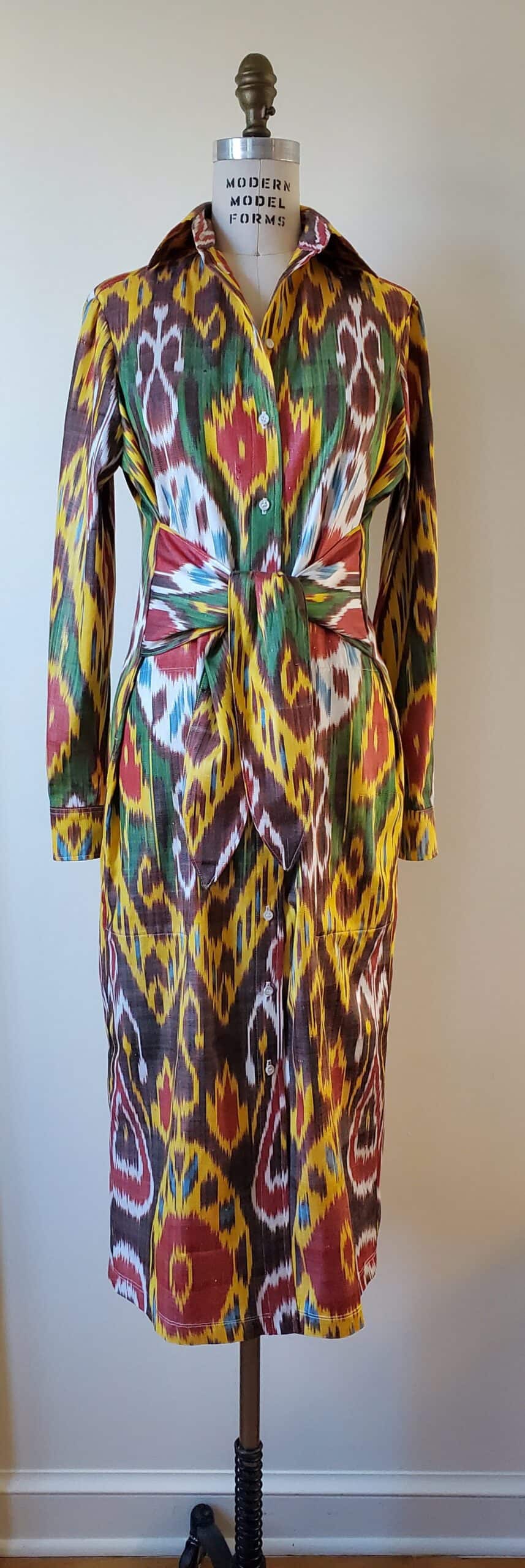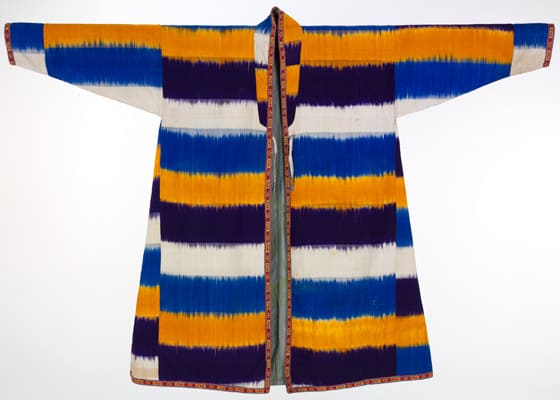1960s’ Uzbekistan, clay walls, floor mats, ikat dress and a skullhat
“Visiting an Old Kolkhoz Farmer”1964 photo album of Central Asia and Kazakhstan “Visiting an Old Kolkhoz Farmer”—this is the title of a photograph from the 1964 album Central Asia and Kazakhstan. Several interesting details stand out in this image: The simple clay walls
Yellow Ikat Cotton Table Runner: Hand Wash Test Before And After
Ikat fabrics are known for their vibrant patterns and artisanal craftsmanship, but maintaining their beauty requires careful attention. To ensure the Yellow Ikat Cotton Table Runner is durable and easy to care for, we conducted a wash test to examine its color retention, texture, and overall quality after washing.
Wash Test Procedure For The Yellow Ikat Cotton Table Runner
Before offering this elegant piece to our customers, we subjected it to a step-by-step wash test to evaluate its durability. Here’s the precise method we followed:
Washing Process
- Filled a basin with lukewarm water (30°C).
- Added a small amount of shampoo or a mild detergent to preserve fabric integrity.
- Gently hand-washed the fabric, avoiding scrubbing to prevent fiber damage.
Lavender Ikat Table Runner: Wash Test
Ikat fabrics from Uzbekistan are renowned for their luxurious appeal, but traditional varieties often require dry cleaning, making them less practical for everyday use. However, some ikat fabrics can be hand-washed.
The purpose of this post is to document our testing of lavender ikat fabric before transforming it into a table runner. Our goal is to ensure that the fabric passes the “hand-washable” test without compromising its handmade luxurious vibrancy and texture.
Thorough Testing Before Crafting the Table Runner:
Before turning our exquisite ikat fabrics into table runners, we ensure they undergo a wash test. This step is essential to guarantee the fabric remains vibrant and intact after washing.
Here’s the Ikat Fabric Washing Test Procedure:
Washing Process:
- Fill a basin with lukewarm water (30°C).
Summer sale! 3 Days only 50% off storewide!
We're thrilled to announce a fabulous 3-day sale with 50% off storewide!
This is a fantastic opportunity to get something handmade, unique, and special at half price. Explore our luxurious handmade ikat fabrics perfect for your creative projects, ready-made ikat pillow covers for your summer relaxation areas, and a selection of ikat table runners to enhance your beautiful summer dinners.
In addition to our ikat products, we offer a beautiful collection of hand-painted jewelry boxes, silk scarves, and bags. Each piece is a testament to exquisite craftsmanship and unique artistry.
Ikat fabrics and “white gold” of Uzbekistan
Our ikat fabrics, renowned for their vibrant patterns and texture, are usually comprised of approximately 50% cotton and 50% silk, blending traditional craftsmanship with local agriculture. This article delves into the history of cotton production in Turkestan, presently known as Uzbekistan, where cotton cultivation has been a cornerstone of the region's economy and culture for centuries.
Brief Historical Note on Uzbekistan's "White Gold"
Cotton, often referred to as "white gold," has long been a strategically significant crop. Its cultivation began in 19th-century Turkestan. Interestingly, the region’s evolution into a major cotton producer is a direct effect of the abolition of slavery in the United States. With the disruption of American cotton supplies, which were crucial to the Russian economy and military, Tsarist Russia turned its attention to Turkestan.
Among all its colonized territories, Turkestan had the ideal climate for cotton cultivation. Initially, local farmers grew cotton for export which was very minimal and the population's use.
Originally cultivated to meet the demands of the Russian Empire’s population and military, cotton, over the years, has since become a vital part of the economy. It plays a key role in providing affordable clothing and supporting military efforts. Over time, the narrative of cotton has become one of pride, enrichment, power, and military strength, but it has also brought serious ecological issues to the region.
5 Things You Should Know Before Buying Ikat Fabric
Ikat fabrics have become the latest buzz in the world of fashion and home decor, catching the eyes of those who crave a blend of tradition and style. However, diving into the ikat trend and buying ikat fabrics without a proper understanding of what you're getting into can lead to surprises. This article serves as your friendly "ikat fabric buyer beware," aiming to arm you with essential insights before you invest in these textiles. Please note that everything we cover in this post applies to ikat fabrics made in Uzbekistan. So, let's unravel the ikat mystery together.
1. Ikat Fabrics and their Narrowness
One of the characteristics of ikat fabrics from Uzbekistan is their distinctive width. These textiles typically measure between 40-50 cm (approximately 16-20 inches for our imperial friends). This specific range of width is not a random choice. It is a direct reflection of the limitations imposed by the traditional handlooms on which these fabrics are meticulously woven. We have a blog post specially dedicated to this aspect of Uzbek ikat fabrics. Due to these constraints, for projects requiring more expansive pieces of fabric, you'll find it necessary to join together multiple strips of ikat, ensuring the ikat patterns align seamlessly.
How much of ikat fabric will I need for a dress?
How much of ikat fabric will I need for a dress? This was a question posed by Roberta, one of our Italian customers. This post is our answer to Roberta, along with the reasoning behind it, so you can adapt the calculation for your own needs.
Buying handmade ikat fabrics can be thrilling, but figuring out how much you'll need for a dress can be tricky. This is especially true because Uzbek ikat fabrics are typically narrow in width and require careful ikat pattern matching. Width of Uzbek ikat fabrics, depending on a pattern, can vary from 35cm to around 50cm (13.7" to 19.6"). We specify this measurement in each product description.
1958 school girl | ikat dress and memories
We love this photo! It is from “Life” magazine archives and was taken in Tadjikistan in 1958 by an American photographer Howard Sochurek during his travels in the former USSR.
As a woman born and raised in Soviet Central Asia, this photo resonates deeply with me. It evokes a rush of nostalgia and fills my heart with warmth. It beautifully captures the essence of that era, speaking volumes about a social landscape of those times.
In 1958, the girl in this photo resembles how our mothers appeared when they attended Soviet schools: dressed in ikat dresses, hair traditionally braided in many braids, and carrying school bags far too large for their height and age. There was a clear determination to study!
Crafting Chic: How Chicago-based Fashion Designer Used Uzbek Ikat Fabric
Using Uzbek ikat fabrics in fashion has been in a trend in many decades. These unique handmade fabrics intertwine rich historical traditions, artisanal craftsmanship and timeless elegance. An excellent example of its versatility can be seen in the below post, where we talk of a fashion designer Kyle Pearson and how skillfully she used our ikat fabric for making fabulous garments, pairing opulence, cultural wealth and a contemporary style.
The Unique Appeal of Uzbekistan Ikat Fabrics
One of the most captivating aspects of Uzbekistan ikat fabrics is the way they are created. Handmade with patience and precision, these fabrics are known for their narrow width, a characteristic determined by the width of traditional wooden handlooms. While this might seem like a limitation, it's actually the thing that makes these fabrics so unique, especially in today’s world of mass production.
How 19th-Century Ikat Pattern Wove its Way Back into 21st-Century ikat scarf
In the world of fashion, we have seen the significant impact of wars, famines, and diseases. A similar fate befell on Uzbek ikat patterns and ikat weaving traditions. The Soviet State had a huge impact on Central Asia’s rich textile heritage.
